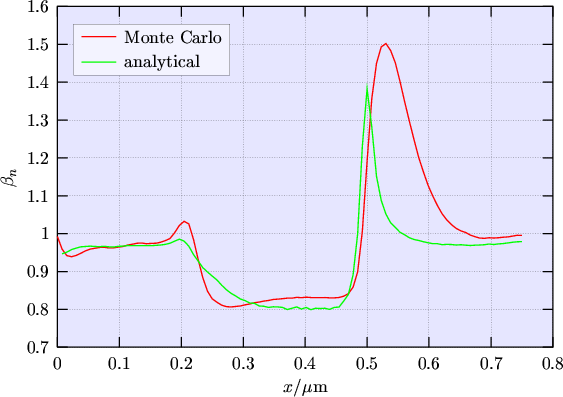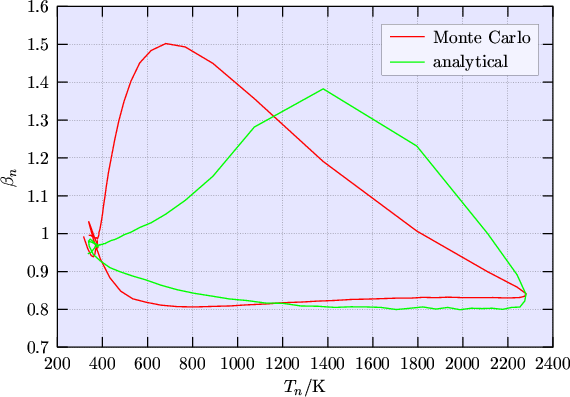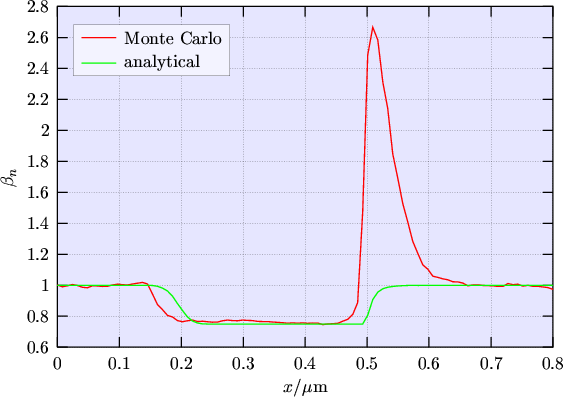|
|
|
|
Previous: 6.2.2 Bulk Case Up: 6.2 Closure Relation Modeling Next: 6.3 Summarizing the Models |
The points B and E in Fig. 5.5 can be distinguished by taking, for example,
the gradient of the carrier temperature into account. To capture both the
![]() and
and
![]() region (Fig. 6.4), such a dependence on the gradient of the
carrier temperature is introduced:
region (Fig. 6.4), such a dependence on the gradient of the
carrier temperature is introduced:
 |
| (6.13) | ||
 |
(6.14) |
 |
However, the model eqn. (6.12) leads to severe stability problems with the numerical
iteration. Furthermore it turned out that the reproduction of the peak is not essential for
solving the problem related to SOI simulations since the important point is to allow
for a reduced ![]() along the channel--especially in the pinch-off region.
along the channel--especially in the pinch-off region.
In most of the channel region the high energy tail is less populated than that of a
MAXWELLian distribution which means that
![]() (Fig. 6.6). It is
believed that proper modeling of the
(Fig. 6.6). It is
believed that proper modeling of the
![]() region is very important for the
SOI problem described in Chapter 4, because the
smaller amount of carriers in the high energy tail will give reduced hot carrier diffusion
into the floating body.
region is very important for the
SOI problem described in Chapter 4, because the
smaller amount of carriers in the high energy tail will give reduced hot carrier diffusion
into the floating body.
 |
To avoid numerical stability problems a model for ![]() as a function of
as a function of ![]() only has
been developed
only has
been developed
M. Gritsch: Numerical Modeling of Silicon-on-Insulator MOSFETs PDF